Andouille: Smoked Sausage Temperatures
Throughout the South, a key player on any BBQ menu is always a smoked sausage. Whether cheesy jalepeño, smoked garlic, applewood chicken, or any other variety, a great smokehouse will always feature a fantastic sausage, usually made in-house. But just because your backyard isn’t a famous Southern smokehouse doesn’t mean you shouldn’t have a great sausage up your own sleeve! And if you’re going to do smoked sausage, you may as well start with Cajun-style Andouille.
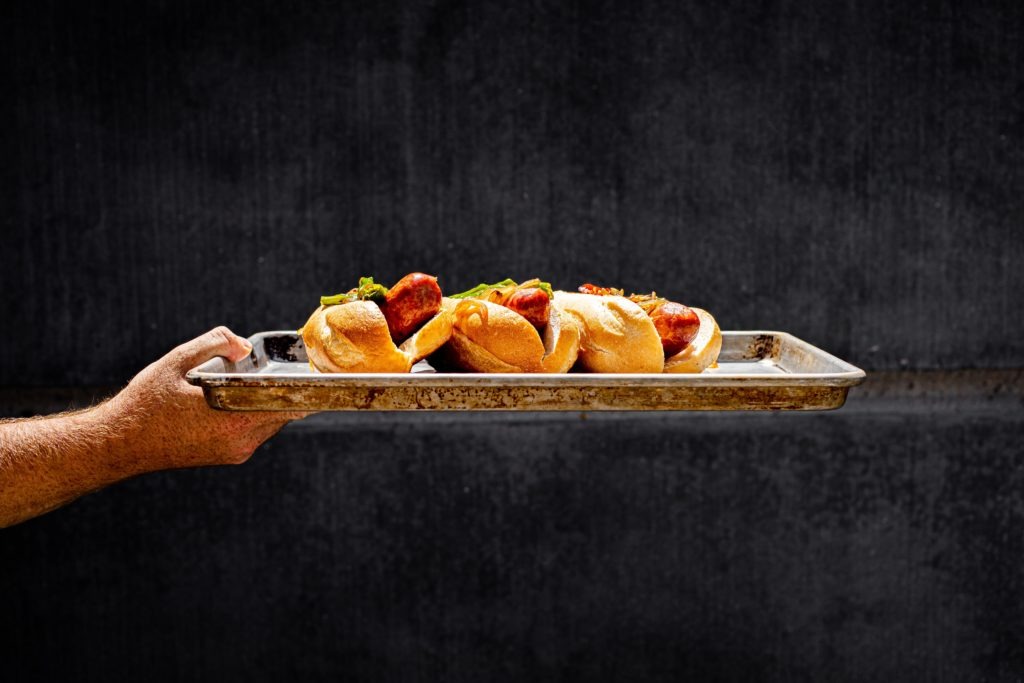
Andouille (pronounced an-DO-ee) sausage is a classic part of Cajun cuisine and is descended—by way of delicious improvement—from the French Andouille. Often made of coarse ground pork, it is highly seasoned, made with curing salt, and smoked to perfection. Andouille sausages can be cold smoked or hot smoked, depending on the final use. They can go into a killer gumbo or any other stew, or be served as a course in and of themselves. Today, we’re hot smoking our sausages to eat on a bun with some sauteed peppers and onions, but the same principles apply to any hot-smoked sausage preparation.
Sausage temperatures
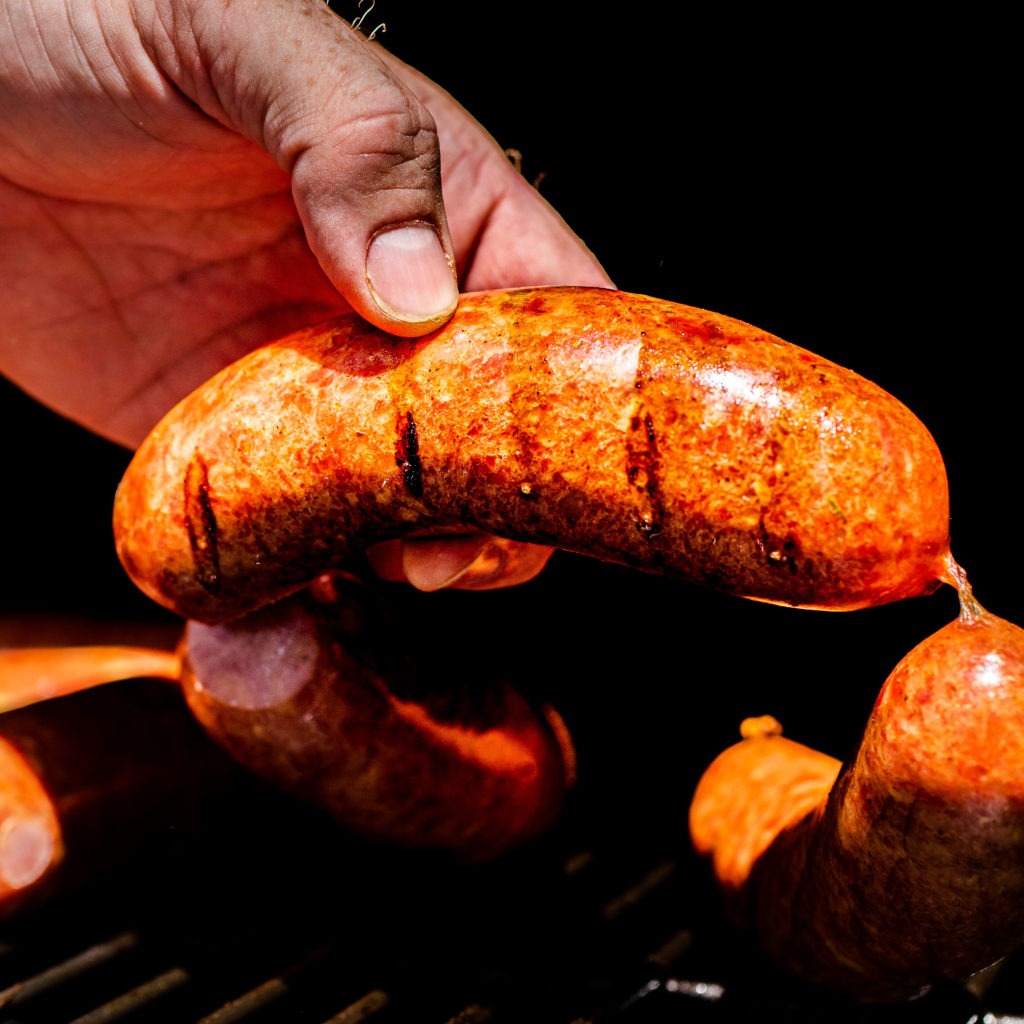
There are two stages in sausage-making when
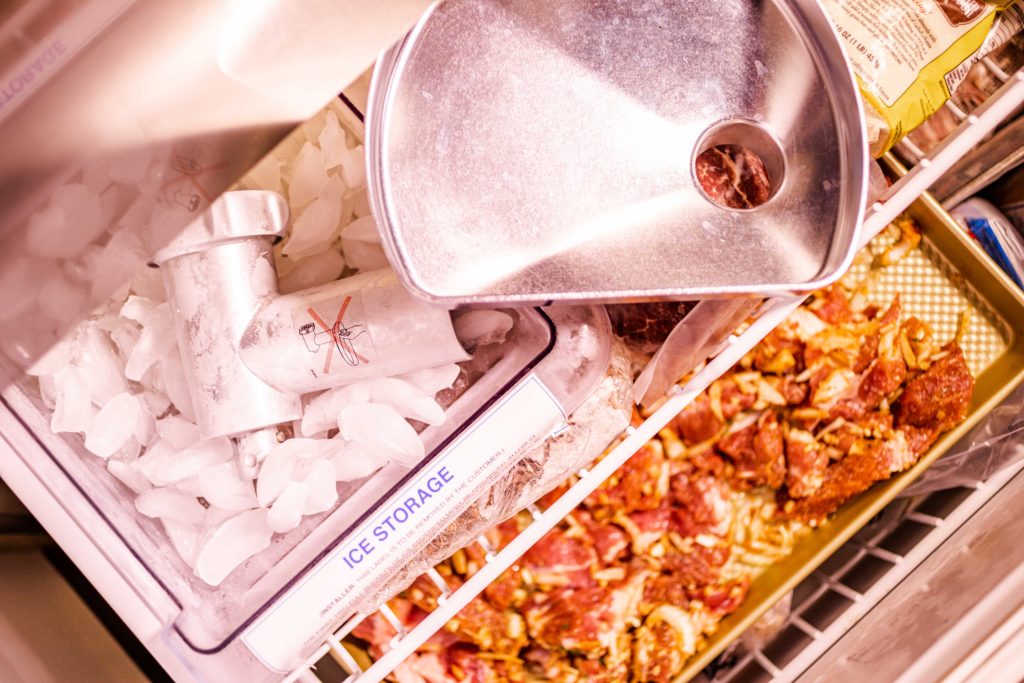
Of course, the other temperature-critical stage is cooking. Nailing the temperature for the cook is important for both safety and deliciousness. Sausages are, by definition, made of ground or minced meat, so they must be cooked to a minimum temperature of 160°F (71°C). But go over that final temperature by even a little and you run the risk of drying your sausage out—and a dried out sausage that was supposed to be juicy is nobody’s friend.
Now, grill surface temperatures typically exceed 500°F (260°C). On a hot grill, we would be hard-pressed to hit 160°F (71°C) without overcooking. But because we’re smoking our andouille sausage, we’ll be cooking these beauties at a nice, easy 225°F (107°C) smoking temperature for a longer period of time. In a “low and slow” smoker, it’s easier to pull things off the heat at precisely the right temperature, especially if you track the internal temperature of your sausages and the smoker air temps with a multi-channel thermometer like Smoke™.
A note on curing salt
This recipe uses curing salt, which changes the color and flavor of the finished product. It is very important to use the correct curing salt, and it is very important to use the right amount. Use Instacure #1 or Prague Powder #1, which are the correct salts used for foods that will be cooked, rather than slowly air-cured. And be sure to use an accurate scale to weigh out the amount of salt you use. Salt proportion is very important. Too much curing salt can actually be toxic.
Smoked Andouille Sausage Recipe
This recipe is based on two sources: Michael Ruhlman’s recipe in his book Charcuterie, and Meathead’s Classic Louisiana Andouille Sausage Recipe.
Ingredients
For the sausage:
- 5 lb boneless pork butt, cut into cubes
- 1 1/2 oz kosher salt
- 6 grams—use a scale!—pink salt (Instacure #1)
- 2 tsp cayenne pepper
- 1 tsp fresh thyme
- 1/2 tsp ground mace
- 1/2 tsp ground cloves
- 1/8 tsp ground allspice
- 3/4 tsp ground mustard seed
- 1 cup diced onion
- 1 tbsp minced garlic
For stuffing:
- 10 feet hog casings
For serving:
- Peppers and onions for sauteeing
- Olive or other oil for sauteeing
- Buns
- Mustard
Instructions
- Before assembling your sausage, put all of the components of your grinder into the freezer to chill.
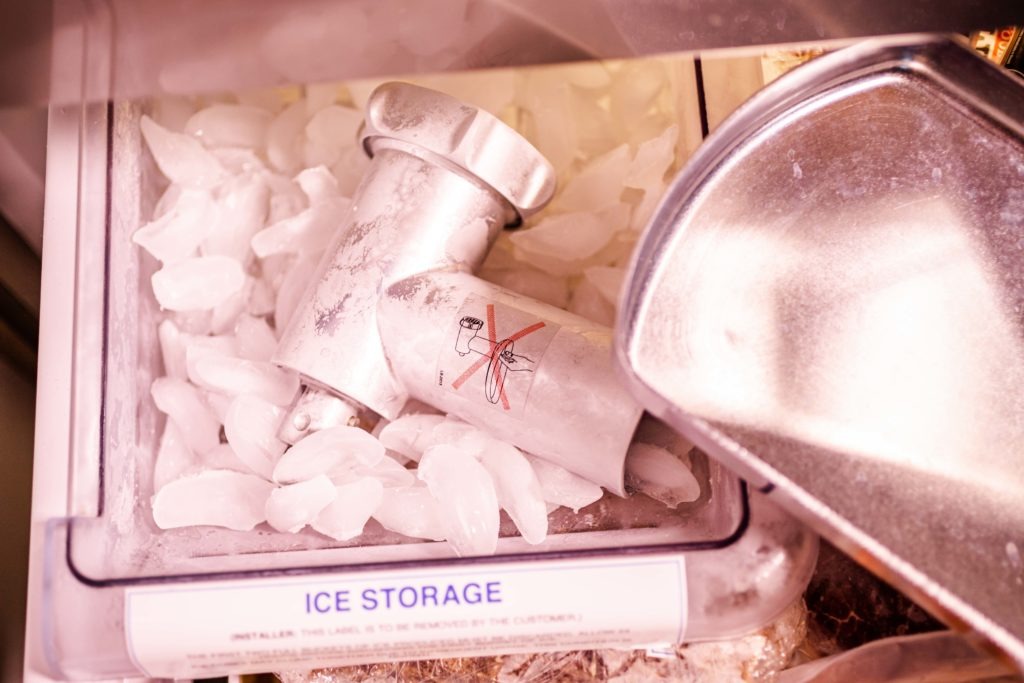
- Combine the cubed pork butt with all of the other sausage ingredients and mix them together well to evenly distribute the seasonings.

- Chill the pork/seasoning mixture in the freezer, as well, for at about 15 minutes, or until the pork is firm to the touch but not frozen.
- Assemble your chilled grinder and grind the pork/seasoning mixture through a coarse grinding plate into a bowl set in ice.

- Mix the ground sausage well until it becomes stringy-fibrous looking—an indication that the myosin network has formed that will help keep the sausage moist.
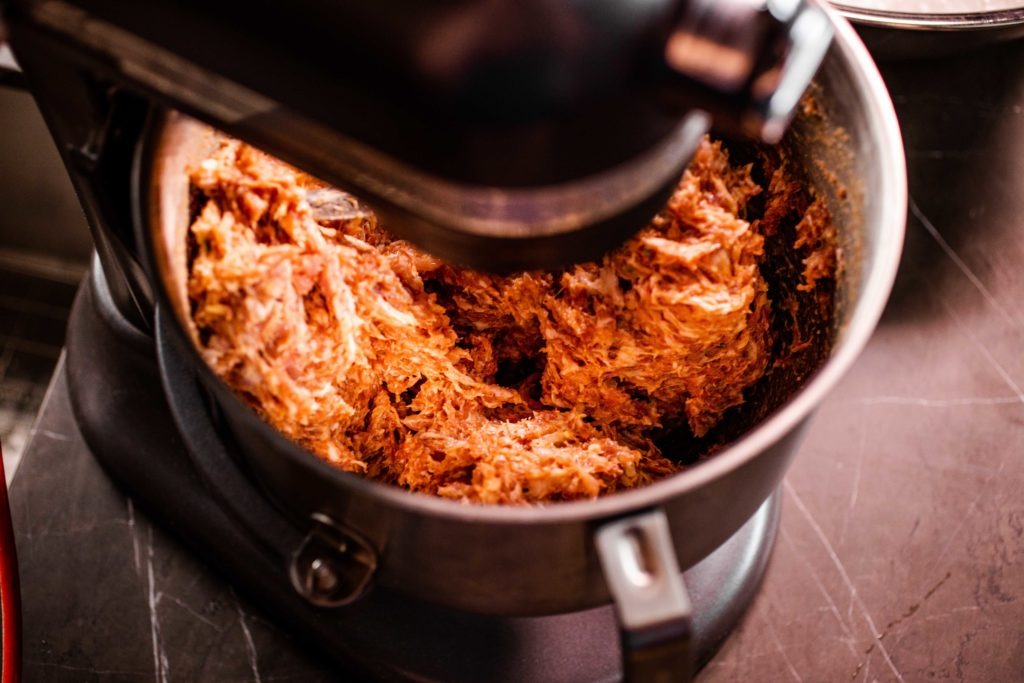
- Stuff the mixed, ground sausage into the casings, being sure not to overstuff them.

- Link the sausage by pinching at about 6″ intervals and twisting, reversing twist direction every time. Do not cut the links apart.
- Allow the sausages to dry for 1–2 hours in the refrigerator, uncovered, before smoking them.
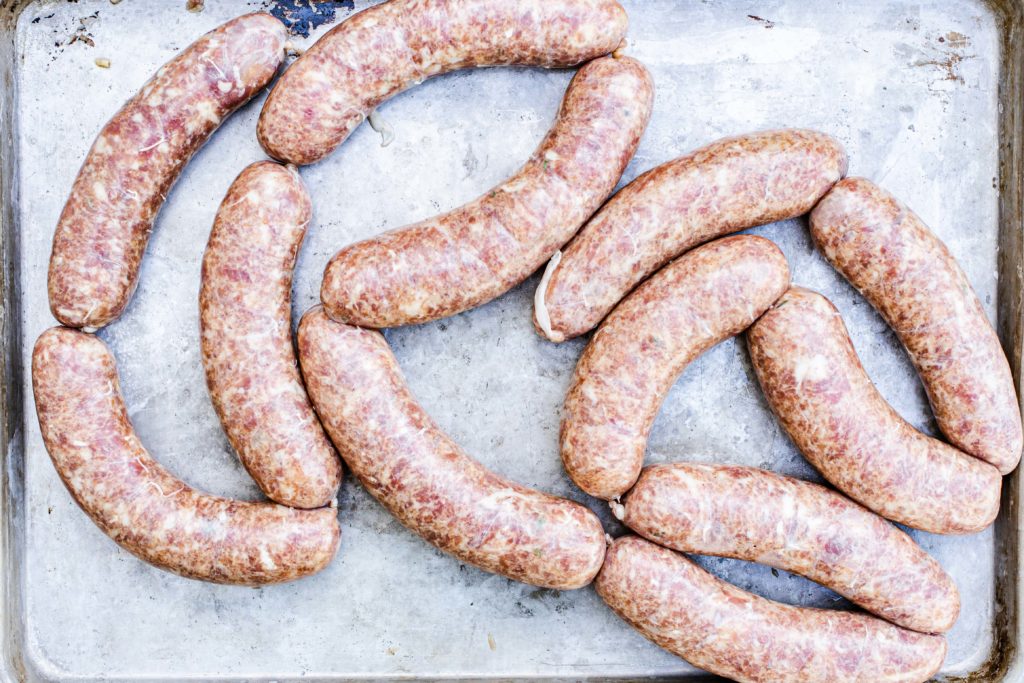
- Preheat your smoker to 225°F (107°C). Place your air probe near where your sausages will be cooking and set the high-temp alarm for the air probe on your Smoke to 250°F (121°C) and the low-temp alarm to 200°F (93°C)
- Place the whole chain of sausages in the smoker. Insert a probe into one of the sausages and set the meat probe high-alarm on your Smoke to 160°F (71°C).
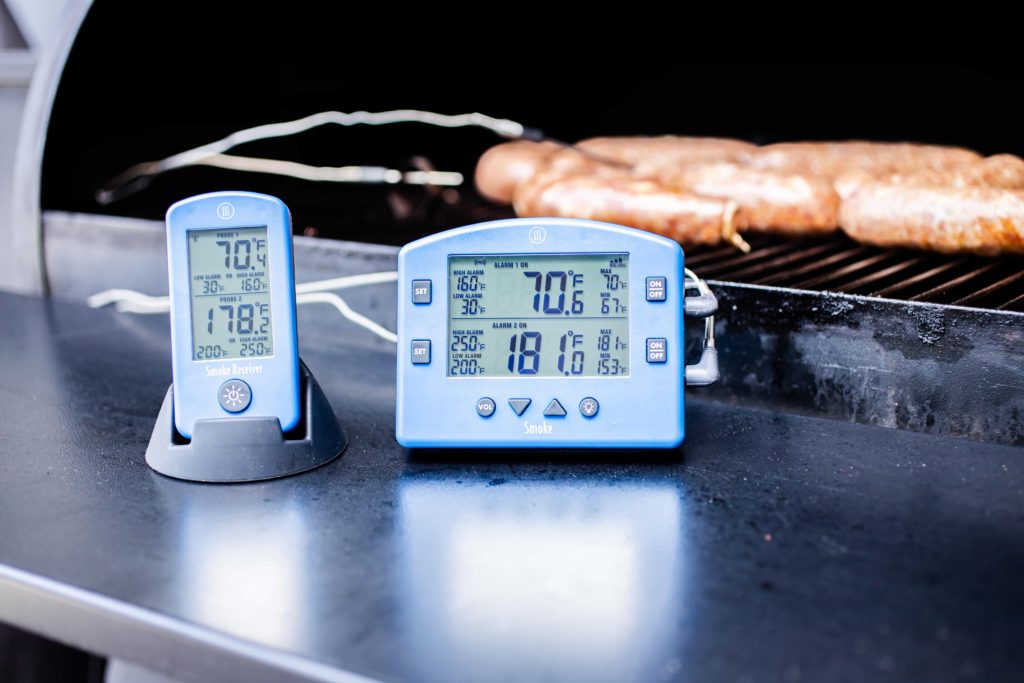
- Smoke the sausages.
- While the sausages smoke, sauté your peppers and onions to your preferred doneness.

- When the meat-channel high-alarm sounds on your Smoke, verify that the temperature is 160°F (71°C) in all of the links with a Thermapen®.
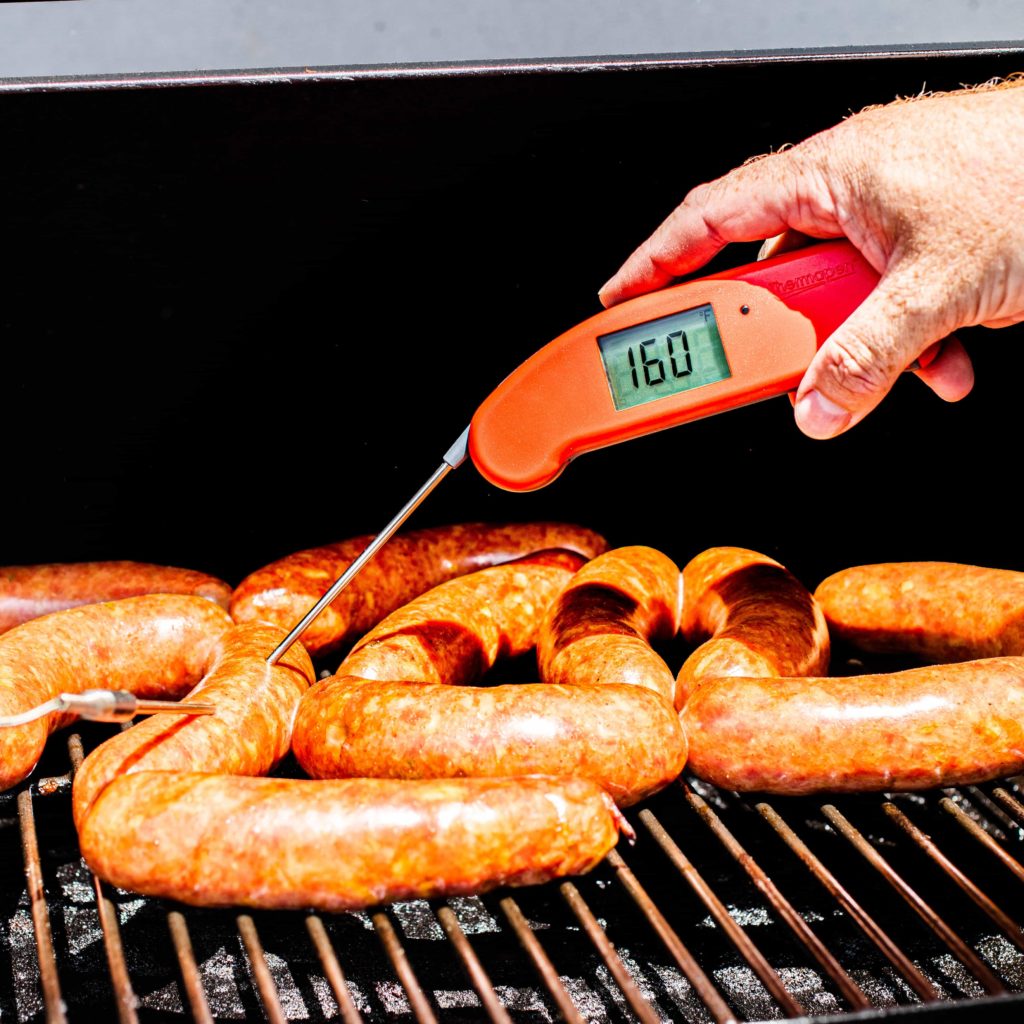
- Remove the sausages from heat and allow to cool slightly before piling them with sauteed peppers and onions onto buns that have been smeared with good mustard.
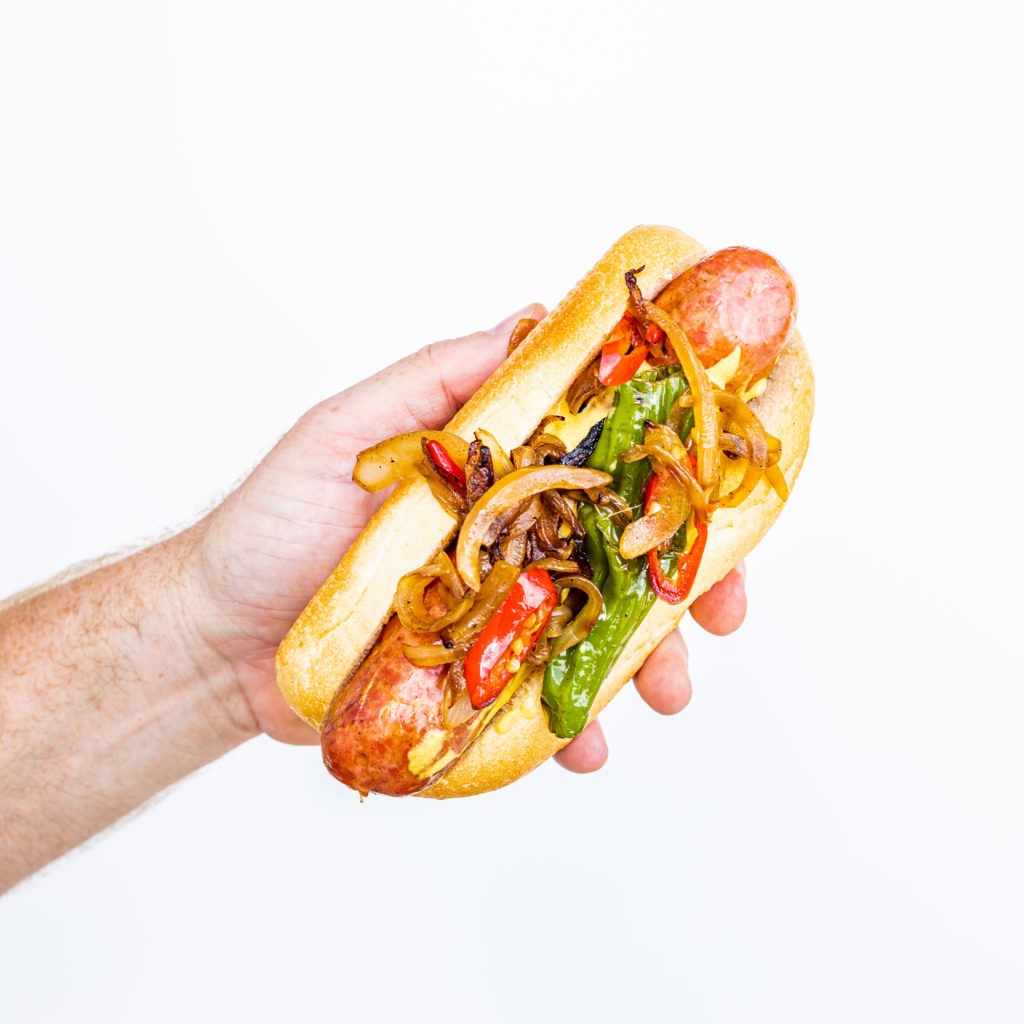
Spicy, savory, hearty: andouille has lots of variations, but this one is a fine example. You can play with the spice level. You can tweak the seasonings. And of course, you can use this method for any smoked sausage recipe. Try it out, and just like the very best smokehouses, you’ll soon have a spectacular smoked sausage in heavy rotation on your own smoker. Just be sure to keep both the meat and your equipment cold while you’re working it and to cook to 160°F (71°C) with your Smoke and Thermapen® for safe, juicy results.
For more on homemade sausages, be sure to read about Making Homemade Bratwurst.


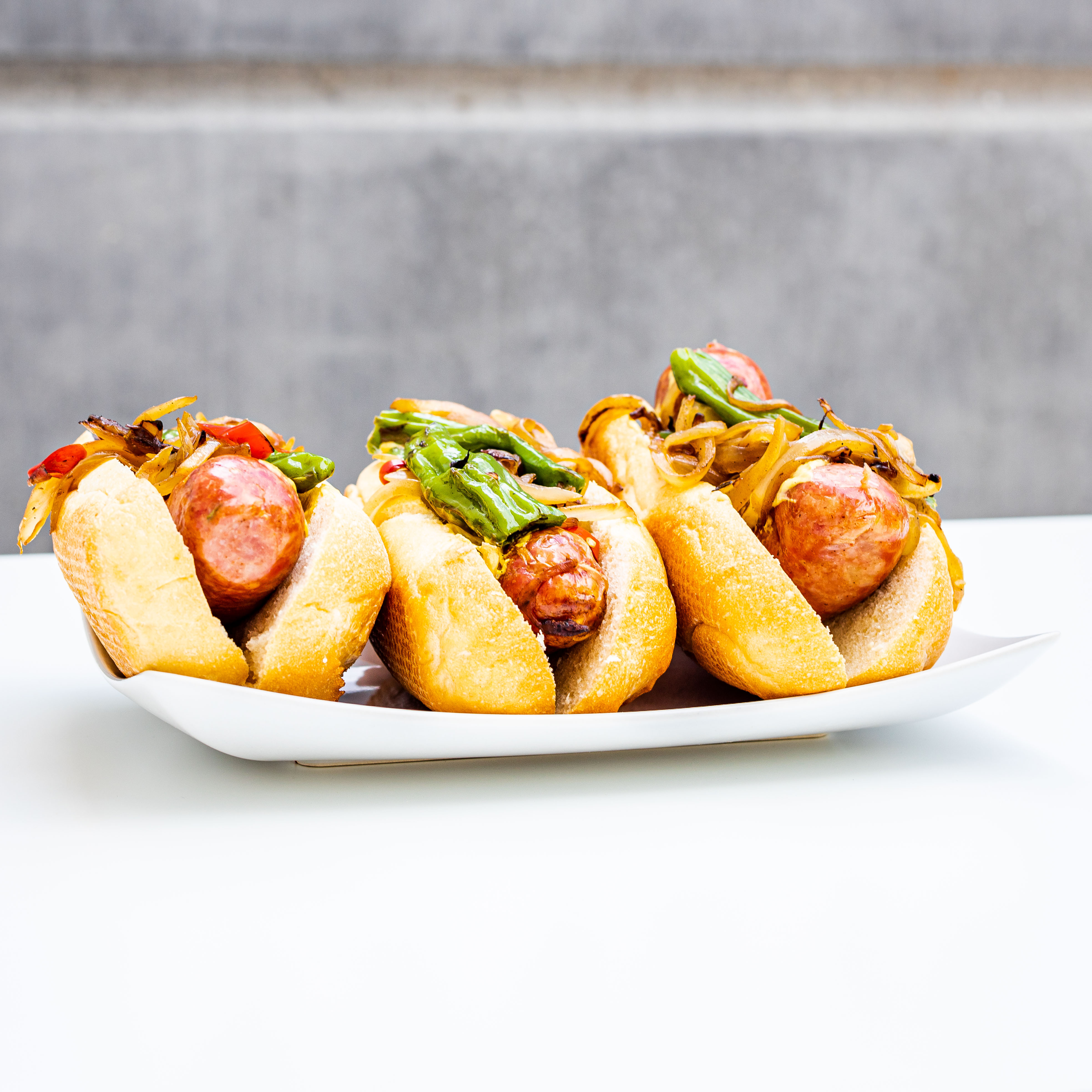
Granted, cook times vary based on so many things, but with this recipe, (and with most others, really) it would be SO helpful if you would add the approximate time you believe the food would take to reach the stated temp at the temperature setting recommended. No one will hold you to that to the minute of course, but for someone doing something for the first time, a (very) general idea of how long it will take would really help. An hour? Two hours? Six? I don’t know, but I’m willing to bet that these sausages take much longer to reach 160* than it takes to saute my peppers and onions! General estimates for cook times, please.
Thanks for the ThermoBlog….very useful stuff!
Cheryl,
Fair point! These sausages took about 60–70 minutes to cook, plenty of time to saute the peppers!
Hi guys
My main point of interest at this time. Really need and appreciate your help. I am in looking for a smoker not a cooker ( for home use) that has adequate temp control in the range 100 deg to about 275 deg F. I’ve read the reviews on smokers in this range and reviewers comment that the actual temp is about 30 to 40 deg both high and low from the (quote) gauge setting, but the mean or avg. temp over a 45 to 60 min time span is close to target. I really don’t like this for low and slow smokes.
All suggestions will be appreciated
My best regards
Tommy
Tommy,
There are few, if any, smokers that operate well at temps below 225°F. IT’s just hard to have a fire that keeps burning but stays that low. Alton Brown uses a home-made contraption with two cardboard boxes, a hotplate, and some dryer-vent pope that would work well and is super cheap to make.
If you have a weber kettle, you can line up some charcoal around the edge single line… back to back. It’s the snake method. Light one or two of the coals and put on the lid and adjust the vents, open the lower vent about 1/2 way and the top vent about the same. Measure the grate temperature and adjust the top vent until you get to the desired temperature. Once you hit it, add your meat.
I just finished stuffing 5 lbs of this sausage with no alterations – exactly 5 lbs of pork, 6 grams of #1 pink curing salt, and 1-1/2 oz of Morton’s Kosher salt (why mix weight units in the recipe?) and after frying a couple of pats that were left in the stuffer, it’s way, way, WAY too salty. I’ll see how the flavor profile develops after smoking the links tomorrow, but as of right now I’d reduce the Kosher salt quite a bit if I made this again.
Daniel,
Strange that they came out so salty. I use the same proportion of salt in my bratwursts, too, and find them delicious. You are using 1.5 oz by weight, not by volume, yes? If, in the end, you find them too salty, by all means, adjust for your personal taste.
As for unit-switching, it’a good question. 6g is equivalent to 0.21 oz, and many home scales that have both grams and ounces don’t display their oz measurements that accurately. Many use fractions, and that’s just not as accurate for getting the correct amount of pink salt. Should I put the whole thing in grams? Probably yes.